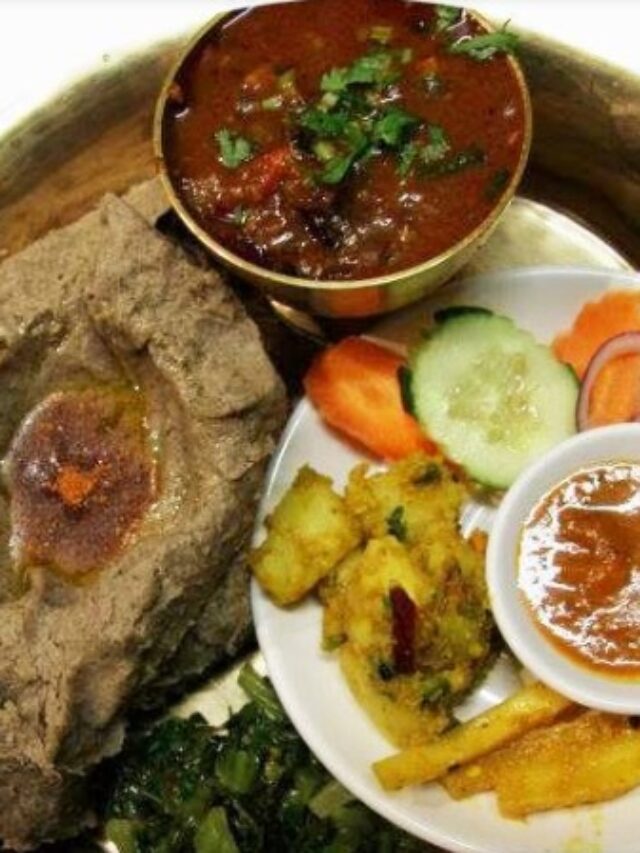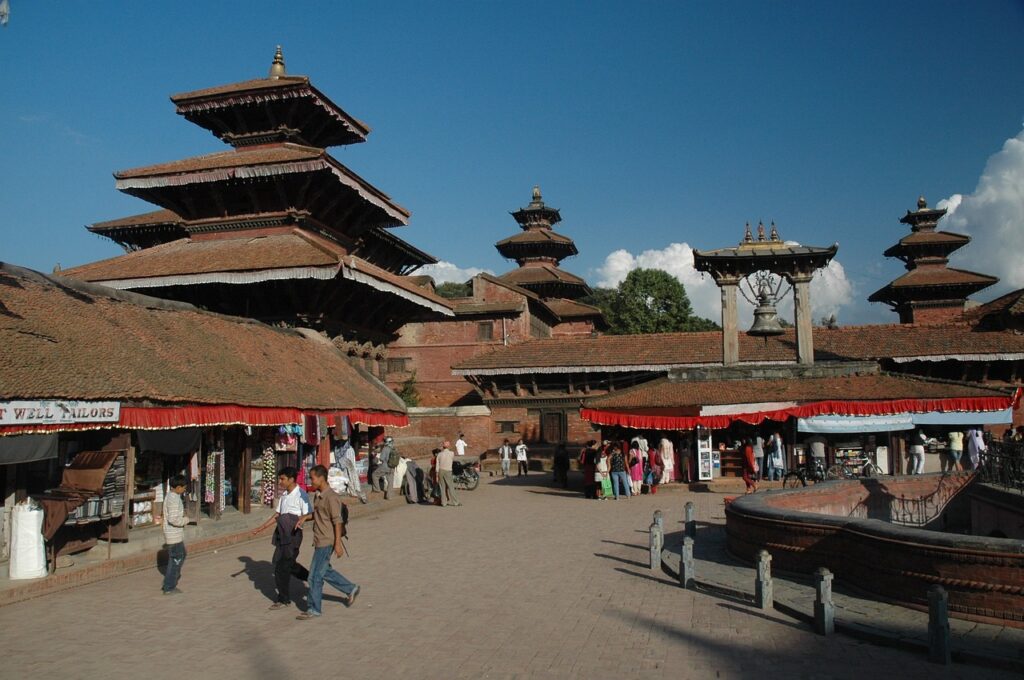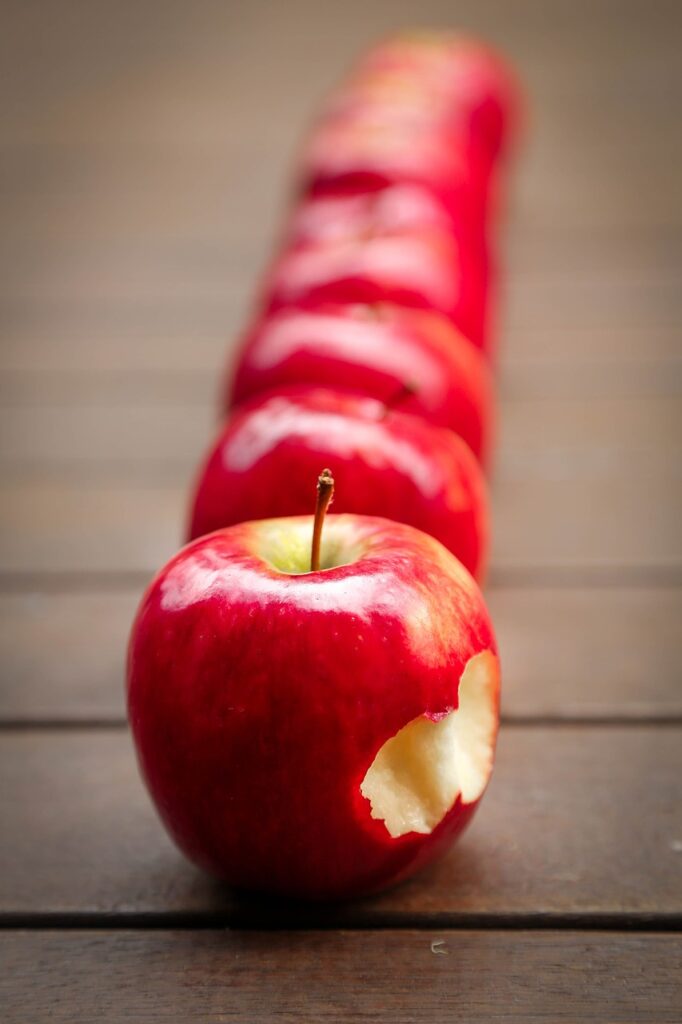1. Dal Bhat (Lentil Soup with Rice):
Dal Bhat, a cornerstone of Nepali gastronomy, is more than just a meal; it’s a cultural experience that embodies warmth, unity, and nourishment. The lentil soup, enriched with the earthy aroma of cumin and turmeric, dances on the taste buds, while the steamed rice forms a comforting base. This daily ritual connects Nepali households, weaving a tapestry of tradition and sustenance.
Recipe: To recreate this Nepali staple, begin by rinsing a cup of red lentils and cooking them until tender with a pinch of turmeric and salt. Separately, sauté finely chopped onions and minced garlic until golden brown, then add diced tomatoes, cumin, and salt, cooking until a savory mixture forms. Combine the lentils with the tomato blend, letting the flavors meld. Cook rice separately, serve the lentils over rice, and garnish with fresh coriander.
2. Momos (Dumplings):
Momos, those delicate pockets of happiness, are the epitome of Nepali street food. These dumplings, whether filled with seasoned vegetables or succulent minced chicken, represent a gastronomic journey through the bustling streets of Nepal. Served with a tangy dipping sauce, momos transcend being mere dumplings; they are a symphony of textures and flavors.
Recipe: Crafting momos begins with mixing a filling of finely chopped cabbage, grated carrots, minced garlic, ginger, and ground chicken (for non-veg) in a bowl. Spoon this mixture onto round dumpling wrappers, fold and seal, creating crescent-shaped delights. Steam or pan-fry until cooked through, then serve with a dipping sauce made from soy sauce, vinegar, and a hint of chili.
3. Gundruk (Fermented Leafy Greens):
Gundruk, the Nepali sauerkraut, introduces a delightful tanginess to the culinary panorama. Beyond being a fermented dish, it represents the resourcefulness of Nepali cooking. The shredded leafy greens, combined with turmeric and salt, undergo a week-long fermentation, resulting in a side dish that adds a distinct flair to Nepali meals.
Recipe: To prepare gundruk, finely shred fresh leafy greens and mix them with turmeric and salt, squeezing to release water. Pack this mixture tightly in a jar, allowing it to ferment for a week. After fermentation, sun-dry the gundruk for a day. Incorporate it into soups or savor it as a unique side dish.
4. Sel Roti (Rice Doughnut):
Sel Roti, the breakfast delight of Nepal, is a crispy rice doughnut with a chewy center. Its mildly sweet taste and aromatic essence make it a beloved morning treat, often paired with yogurt or spicy pickles. Each bite tells a story of Nepali mornings and the diversity of the country’s breakfast cuisine.
Recipe: Crafting sel roti involves mixing rice flour, wheat flour, sugar, and milk to form a thick batter. The batter is then poured in ring shapes into hot oil, frying until a golden brown hue is achieved. Serve these delightful rings with yogurt or pickles for an authentic Nepali breakfast experience.
5. Gurung Bread (Kodo Ko Roti):
Gurung Bread, fashioned from millet, is a gluten-free and nutritious alternative to regular bread. Its nutty flavor and versatility make it a staple in Nepali households, showcasing the country’s commitment to utilizing diverse grains in their culinary traditions.
Recipe: To prepare Gurung Bread, mix millet flour, salt, and water to form a dough. Roll the dough into flatbreads and cook on a hot griddle until brown spots appear. Serve these nutritious flatbreads with curries or pickles for a wholesome Nepali meal.
6. Yomari (Steamed Dumplings):
Yomari, the sweet steamed dumpling, holds a special place in Nepali festivals. This delicate rice flour envelope encapsulates a gooey filling of jaggery and sesame seeds, creating a harmonious blend of sweetness and nuttiness that resonates with celebratory moments.
Recipe: Crafting Yomari involves rolling rice flour dough into small discs, filling them with a mixture of jaggery and sesame seeds, and steaming until cooked. The result is a delightful treat with a sweet, gooey center, perfect for festive occasions in Nepal.
7. Newari Cuisine: Bara and Aloo (Black Lentil Patties with Potatoes):
Bara and Aloo, a cherished Newari snack, offers a delightful contrast of textures and flavors. The crispy black lentil patties perfectly complement the spiced potatoes, creating a symphony of tastes that reflects the rich and diverse culinary landscape of Nepal.
Recipe: Begin by soaking black lentils overnight and blending them into a thick batter. Fry small patties until golden brown. For the spiced potatoes, boil and mash them, adding cumin, coriander, turmeric, green chilies, and ginger paste. Serve the patties with the flavorful spiced potatoes for an authentic Newari culinary experience.
8. Thukpa (Noodle Soup):
Thukpa, the heartwarming noodle soup, transcends borders and brings together Tibetan and Nepali culinary influences. The steaming bowl, filled with toothsome noodles, vibrant vegetables, and fragrant broth, embodies the warmth and hospitality deeply ingrained in Nepali culture.
Recipe: To prepare Thukpa, cook noodles separately. Simmer a mix of vegetables, garlic, and ginger in a hearty chicken or vegetable broth. Combine the noodles with the broth and garnish the soup with fresh cilantro for a comforting and flavorful experience.
9. Ghurkha Chicken (Kukhura Ko Masu):
Ghurkha Chicken, bold and spicy, encapsulates the fearless spirit of Nepali cuisine. The aromatic blend of spices infuses tender chicken pieces, creating a robust and flavorful dish that lingers on the palate, telling tales of Nepali culinary prowess.
Recipe: Begin by sautéing onions, garlic, and ginger. Add spices and tomatoes, then cook chicken until tender. Garnish with cilantro and serve this flavorful dish to experience the bold taste preferences of Nepali cuisine.
10. Raksi (Traditional Nepali Liquor):
Raksi, the traditional Nepali liquor, is more than a beverage; it’s a cultural emblem. Crafted through a unique fermentation process, Raksi holds historical and social significance, offering a glimpse into the traditions of Nepali celebrations.
Recipe: To prepare Raksi, cook millet or rice, let it cool, and mix it with water and yeast. Ferment the mixture in a covered container for a few days, then distill the fermented liquid. The result is a traditional Nepali liquor that embodies the spirit of celebration and camaraderie.


